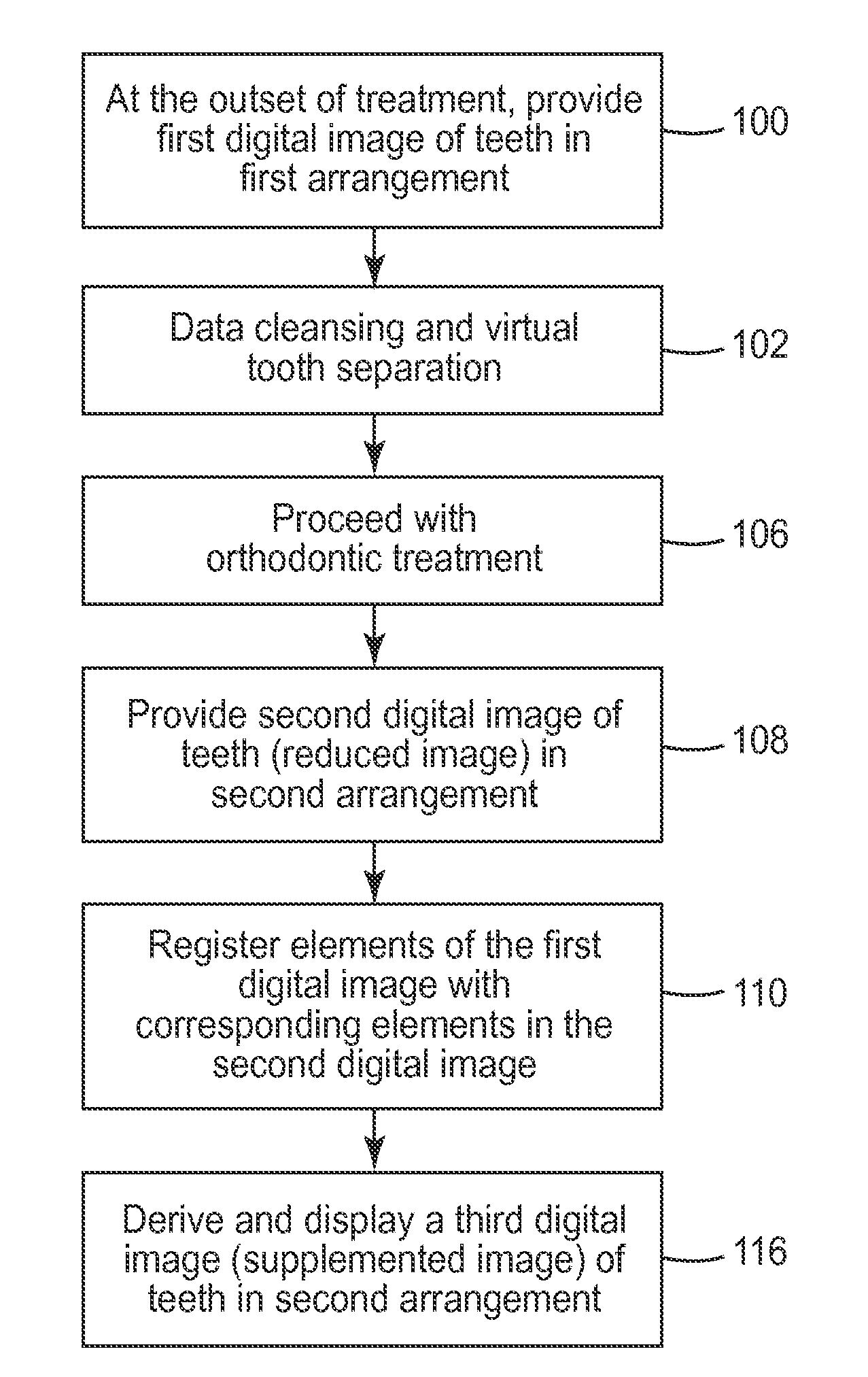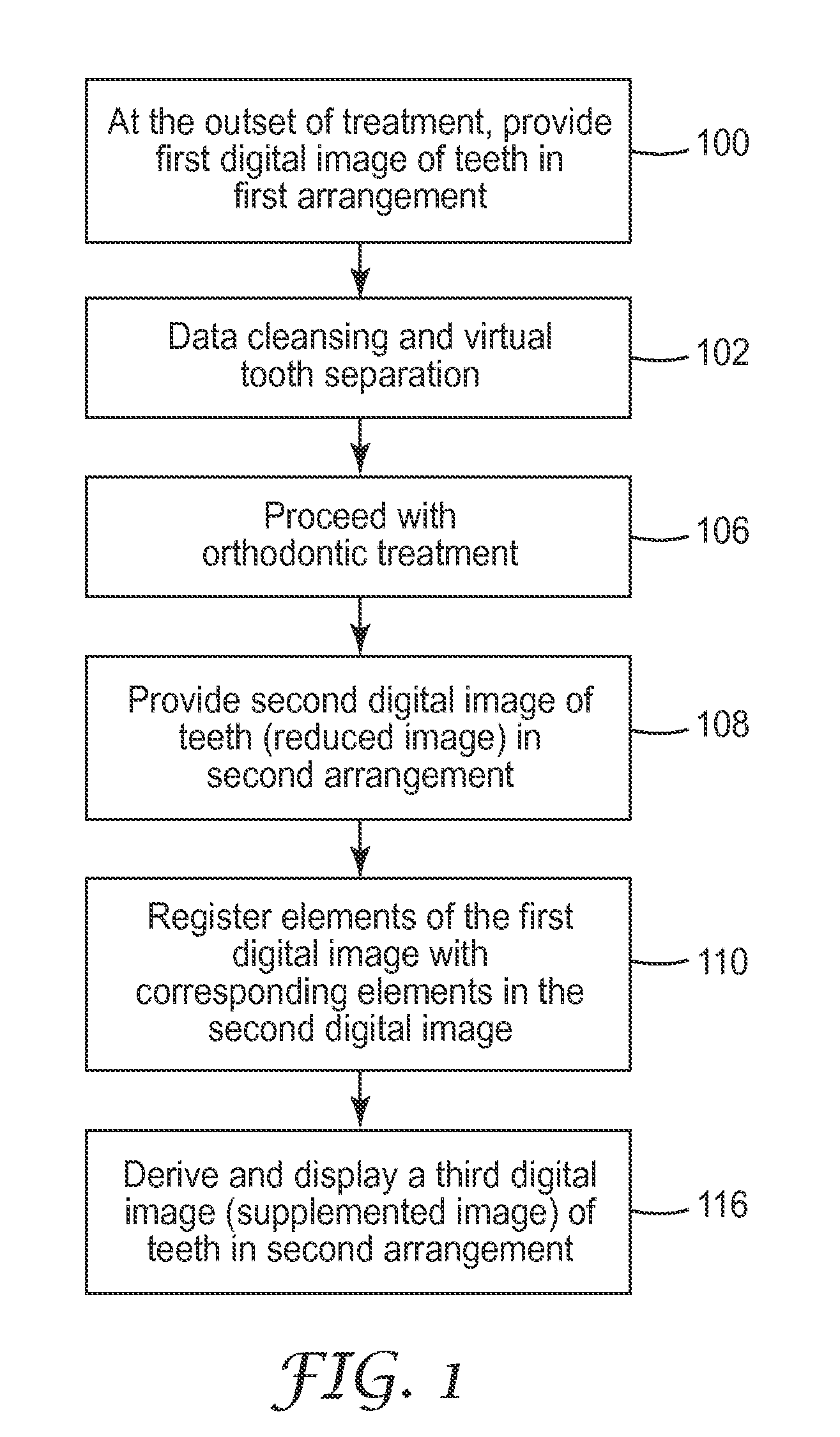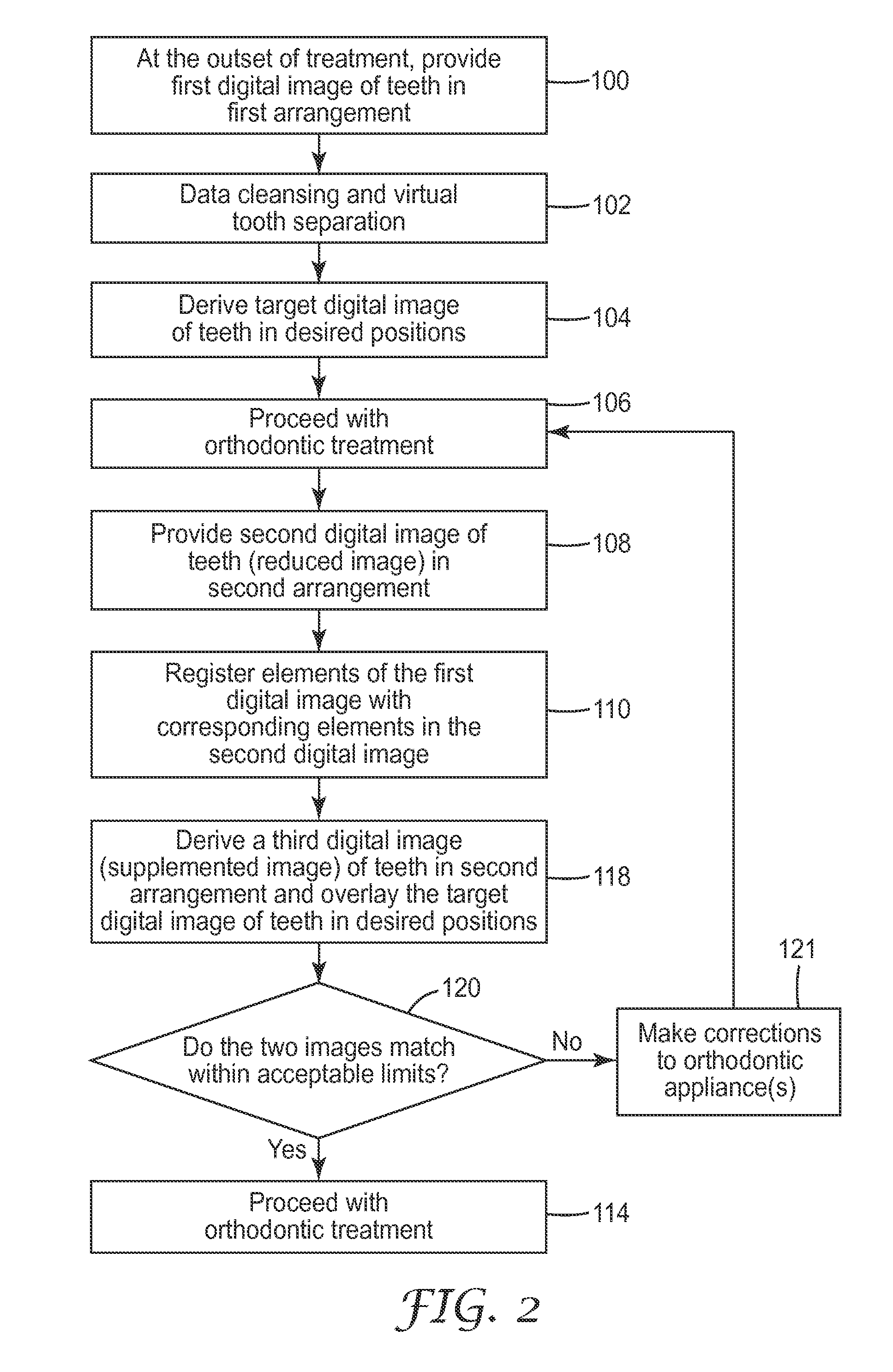Orthodontic treatment monitoring based on reduced images
- Summary
- Abstract
- Description
- Claims
- Application Information
AI Technical Summary
Benefits of technology
Problems solved by technology
Method used
Image
Examples
example
[0084]Aspects of the methods above are further demonstrated by the following example. A physical dental model of the upper and lower jaws, made from orthodontic stone, was provided by a local orthodontic office. For exemplary purposes, this dental model was used to simulate a patient's dental structure in a given dental arrangement. To prepare the first digital image, a polyvinylsiloxane impression was first taken using POSITION PENTAQUICK brand impression material available from 3M ESPE (St. Paul, Minn.). After allowing the impression to set for 90 seconds, it was removed from the dental model and used to cast a duplicate positive model from F82-302 epoxy resin from United Resin Corporation (Royal Oak, Mich.). To impart opacity to the epoxy model, it was coated with a fine layer of SPOTCHECK brand SKD-S2 Developer white talc powder from Magnaflux (Genview, Ill.). The coated model was then scanned using a SURVEYOR brand OM-3R narrow spectrum visible light laser scanner from Laser De...
PUM
 Login to View More
Login to View More Abstract
Description
Claims
Application Information
 Login to View More
Login to View More - R&D
- Intellectual Property
- Life Sciences
- Materials
- Tech Scout
- Unparalleled Data Quality
- Higher Quality Content
- 60% Fewer Hallucinations
Browse by: Latest US Patents, China's latest patents, Technical Efficacy Thesaurus, Application Domain, Technology Topic, Popular Technical Reports.
© 2025 PatSnap. All rights reserved.Legal|Privacy policy|Modern Slavery Act Transparency Statement|Sitemap|About US| Contact US: help@patsnap.com



